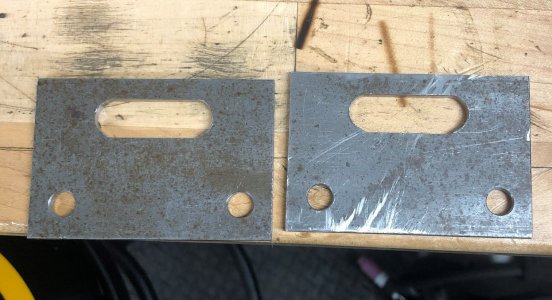- Joined
- Feb 19, 2014
- Messages
- 112
Hi all,
Little background. I'm new to machining, milling in particular. Every time I try to make a slot it always ends up oversized. I just made a set of brackets for a friend and the original size was supposed to be a 7/16" slot. I drilled a hole at the beginning and ending of the slot hoping that would make it better. Nope, the slot still ended up oversized. My 7/16" end mill was quite dull which I'm sure didn't help, but its not the sole reason. In the pics I actually went back in with a smaller sharper end mill to clean it up because it looked terrible so now they're even more oversized. My setup is a Bridgeport J head I was probably running 500rpm with a dull 4 flute HSS cutter. I also had a coolant mister spraying the end mill.
Little background. I'm new to machining, milling in particular. Every time I try to make a slot it always ends up oversized. I just made a set of brackets for a friend and the original size was supposed to be a 7/16" slot. I drilled a hole at the beginning and ending of the slot hoping that would make it better. Nope, the slot still ended up oversized. My 7/16" end mill was quite dull which I'm sure didn't help, but its not the sole reason. In the pics I actually went back in with a smaller sharper end mill to clean it up because it looked terrible so now they're even more oversized. My setup is a Bridgeport J head I was probably running 500rpm with a dull 4 flute HSS cutter. I also had a coolant mister spraying the end mill.


